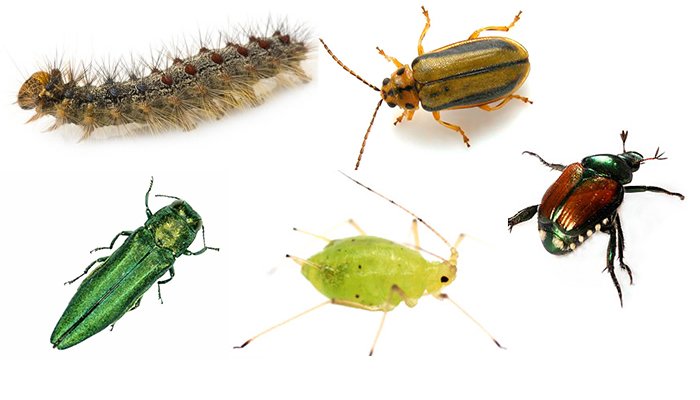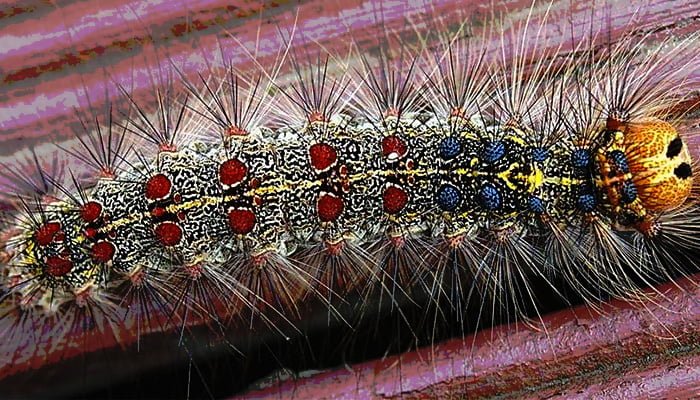Gypsy Moth
As with many invasive species, the Gypsy Moth was accidentally introduced into Massachusetts in 1869. Years later in the early 1900’s, it had become widespread into New England states, eastern NY and the regions of NJ.
Each year in June, we receive a flooding of calls from clients with Gypsy Moth infestations. As a caterpillar, this pest is producing damaging results to many local trees by eating them. Visible damages to your leaves and trees, as well as the presence of excrement, are signs that the caterpillar may be chewing on your trees (oak trees are their favorite meal). Many of our clients have even expressed that they can actually hear the caterpillars chewing.
During the month of July, the caterpillars reach their pupa stage, allowing them to develop into the full growth state. Once a gypsy moth caterpillar reaches its adult phase, they mate leaving anywhere from 75-1,000 eggs behind, contributing to the continued spread of their invasive species.
Treating the damages that the caterpillars have already done, as well as remaining proactive in prevention, is key in maintaining the health of your trees.
Identifying and being able to decipher the difference between insects you spot on your trees is not always easy, but it is important. Proper insect identification is often challenging because different pests can cause similar damages to your trees, and certain insects may resemble each other. Properly identifying the type of tree that they are …
Insect Identification: Tree Pests To Be Aware Of Read More »
As with many invasive species, the Gypsy Moth was accidentally introduced into Massachusetts in 1869. Years later in the early 1900’s, the Gypsy Moth had become widespread into New England states, eastern NY and the regions of NJ. Each year in June, we receive a flooding of calls from clients with Gypsy Moth infestations. Currently, …
The Gypsy Moth Caterpillar Damages Read More »
Invasive species are plants, fungus, or animal species that are not native to a specific location and often spread damages to the environment and human health. Often, humans are responsible for the spread of invasive species. Some examples of how they can be carried or spread are through: Ships – Can carry aquatic organisms in …
What Is An Invasive Species? Read More »
The Gypsy Moth – They’re Back! AKA Lymantria dispar (Linnaeus) The gypsy moth was accidentally introduced into Massachusetts in l869. By 1902 this pest was widespread in the New England states, eastern New York, and regions of New Jersey. The gypsy moth was first detected in Luzerne and Lackawanna Counties in northeastern Pennsylvania in l932. …
Our Insect & Pest Control Services Can Help Read More »



